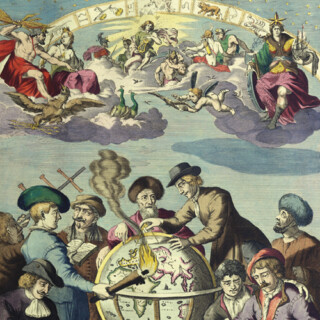Arrowsmith’s fine twin-hemisphere map detailing Cook’s voyages
Map of the World on a Globular Projection
Exhibiting particularly the nautical researches of Captain James Cook, F.R.S. with all the recent discoveries to the present time, carefully drawn by A. Arrowsmith, Hydrographer to H.R.H. the Prince of Wales.
London,
A. Arrowsmith, 10 Soho Square,
January 1st, 1794. Additions to 1808.
Large engraved wall map on six sheets, fine original outlined hand colour, few tears to margins, tear to lower part of western hemisphere, just into image.
1000 by 1865mm. (39.25 by 73.5 inches).
1868
notes:
The map, first published in 1794, is on the same scale - five equatorial degrees to one inch - as Arrowsmith's 1790 'Chart of the World on Mercator's Projection'. It was, he states, to be a companion piece to the former map 'in order to exhibit the contrast between the two best projections upon which general maps of the world can be constructed.'
The map is typical of Arrowsmith's work. All accumulated myth, misconception, and guesswork are stripped away, making ...
The map is typical of Arrowsmith's work. All accumulated myth, misconception, and guesswork are stripped away, making ...
bibliography:
provenance:
![NICOLAI, Gulielmus [Globe Gores] Novus et integra universi orbis descriptio. Lugduni excudebat Gulielmus Nicolai Belga. Prope S. Antonium. 1603](https://i0.wp.com/crouchrarebooks.com/wp-content/uploads/2025/03/18421_1H.jpg?fit=3506%2C3437&ssl=1) Globe Gores
Globe Gores 







